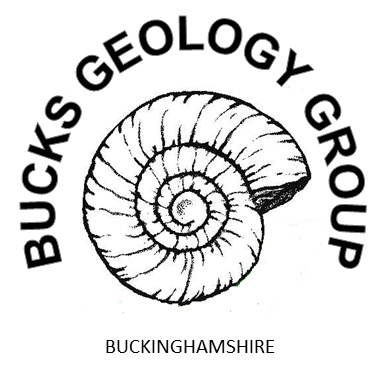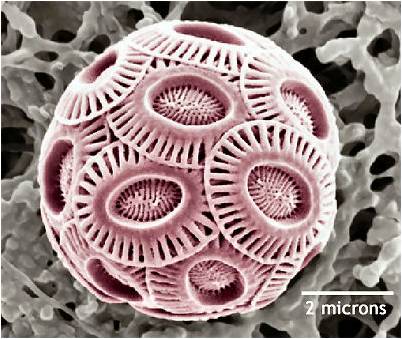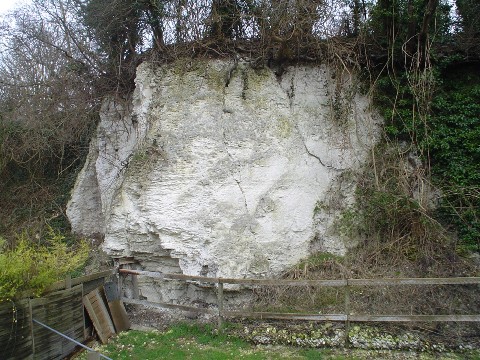|

Bucks Geology Group
Chalk
Chalk forms the central backbone of Buckinghamshire, running from east to west and forming the scarp face of the Chiltern Hills. The entire Chalk Group is some 180-190m thick across the county, and is a distinctive soft, white limestone. The basal unit (Grey Chalk Subgroup, or Lower Chalk) has a higher clay content and contains no flint. The higher unit (White Chalk Subgroup, or Middle and Upper Chalk) is nearly pure, 98% Calcium Carbonate, and flint-bearing.
This pure limestone was laid down during a period of global warming. Sea levels rose to an estimated 300+m above present levels, the areas of land receded and the amount of river-borne sediment being brought into the area diminished, explaining its purity. Chalk is almost exclusively formed from the minute remains of fossil algae, called Coccolithophores. The calcite skeletons of these minute organisms invariably disintegrated on death, and descended to the sea-floor, as a soft ooze. Depositional rates must have been slow during this period. The high global temperatures and high nutrient levels in the sea meant that life was abundant. Although the chalk has selectively preserved some organisms over others (for example, calcite shells are preserved whereas aragonite has dissolved) fossils are fairly common, and include the single celled Foraminifera, Ostracods, Brachiopods, Sponges, Bryozoans, Bivalves, fish and even marine reptiles like turtles and plesiosaurs. Other molluscs such as ammonites and gastropods were undoubtedly present, but their shell composition meant that fossilization potential was low, and they are only found at certain levels where preservation was possible.
The Palaeontological Association has produced a book called The fossils
of the Chalk.


The photo (above right) is an enhanced scanning electron microsope (SEM) image of a Coccolithophore - a tiny
alga composed of spherical plates. Many hundreds of them will fit onto a pin
head! When you rub chalk and get the white powder onto your fingers you will
have just smeared thousands of them between your fingers. [Photo courtesy Dr. Markus Geisen - photographer, and The Natural History Museum. earthguide.ucsd.edu]
Below are a number of fossils which you can expect to find within the Chalk.

This Chalk exposure forms a roadside cutting on the old A41 at Tring Hill.
Further reading suggestions:
Smith, A.B., 2002. Fossils of the Chalk. The Palaeontological Association London.
Images used with permission: © Copyright Buckinghamshire County Museum (Licence No. 44)
|